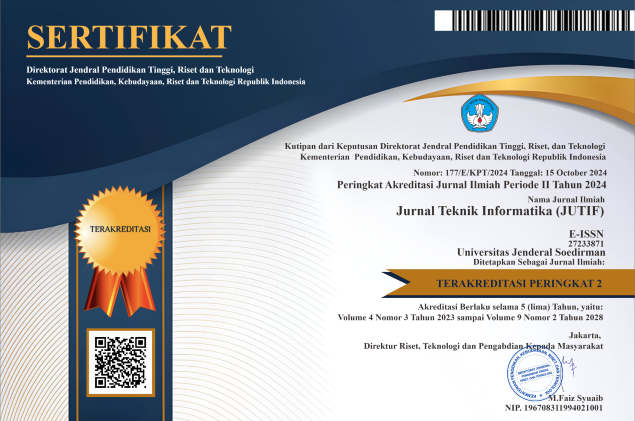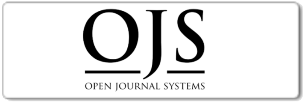SN Systemic Integration of Artificial Intelligence in Indonesian Television Using Soft Systems Methodology
DOI:
https://doi.org/10.52436/1.jutif.2025.6.4.5047Keywords:
Soft System Methodology, Artificial Intelligence for media, Digital Transformation, Television IndustryAbstract
The television industry faces significant challenges due to digital disruption, particularly the increasingly widespread penetration of artificial intelligence (AI) technology. AI has the potential to optimize production, distribution, and audience preference analysis, but its implementation faces the complexities of unstructured social systems. This study aims to explore the systemic application of AI using a Soft Systems Methodology (SSM) approach to identify, analyze, and optimize its use in the television industry. The research method used was qualitative with a case study design at a national television station. The SSM process was carried out through seven stages, starting from exploring the problem situation, compiling rich pictures, analyzing CATWOE, and formulating and evaluating corrective actions. Data were collected through literature review, participant observation, and internal document analysis. The results show that SSM is effective in identifying strategic areas for AI optimization, particularly in audience segmentation, content automation, and broadcast management. The resulting framework is flexible, participatory, and responsive to the social dynamics of media organizations. The impact of this research is a contribution to the development of media information systems and technology, as well as expanding the scope of soft methodologies in responding to the challenges of digital transformation in an adaptive and sustainable manner.
Downloads
References
V. K. Subroto, R. A. Kusumajaya, and W. T. M. Tobing, “The Business Model of the Mass Media Industry in the Era of Artificial Intelligence (AI) Development in Indonesia,” J. Manag. Informatics, vol. 3, no. 2, pp. 230–249, 2024, doi: 10.51903/jmi.v3i2.31.
S. Liping and M. S. Bexci, “The Use and Gratification of Artificial Intelligence ( AI ) in Television News Production in China ’ s Guangdong Province,” vol. 16, pp. 2079–2087, 2024.
N. Anantrasirichai and D. Bull, “Artificial intelligence in the creative industries: a review,” Artif. Intell. Rev., vol. 55, no. 1, pp. 589–656, 2022, doi: 10.1007/s10462-021-10039-7.
Z. Lu, “Integrating Application of Artificial Intelligence and Digital Imaging Techniques in Television Documentary Production,” vol. 8, pp. 88–92, 2025, doi: 10.23977/jaip.2025.080212.
S. Alam, “MEDIA AND ARTIFICIAL INTELLIGENCE :,” vol. 28, no. 2, pp. 1–13, 2024.
N. Niu, A. Y. Lopez, and J. R. C. Cheng, “Using soft systems methodology to improve requirements practices: An exploratory case study,” IET Softw., vol. 5, no. 6, pp. 487–495, 2011, doi: 10.1049/iet-sen.2010.0096.
Y. S. Barusman, Soft Systems Methodology Solusi Untuk Kompleksitas Manajemen. 2017.
K. Fenomenologi, P. Soft, and S. Methology, “Building Competitive Advantage of the Indonesia Membangun Keunggulan Kompetitif Sistem Penyiaran,” vol. 6, no. 1, 2024.
A. A. Setiadi, S. Afifi, and B. A. Suparno, “Adaptation of Multi-platform Broadcasting Management in the Disruption Era: A Case Study of Private Television in Indonesia,” Asian J. Media Commun., vol. 5, no. 2, Dec. 2021, doi: 10.20885/asjmc.vol5.iss2.art5.
G. Amato et al., “AI in the media and creative industries,” no. April, 2019, [Online]. Available: http://arxiv.org/abs/1905.04175
O. R. Ajao, “Optimizing Energy Infrastructure with AI Technology: A Literature Review,” Open J. Appl. Sci., vol. 14, no. 12, pp. 3516–3544, 2024, doi: 10.4236/ojapps.2024.1412230.
S. Taha, “Leveraging Artificial Intelligence in Social Media Analysis : Enhancing Public Communication Through Data Science,” 2025.
H. A. Khayame and M. M. Abdeljawad, “Systems Thinking in Upstream Social Marketing: Using Soft Systems Methodology to Improve Midwifery Policy in Jordan,” Soc. Mar. Q., vol. 26, no. 2, pp. 167–183, 2020, doi: 10.1177/1524500420925810.
P. B. Checkland, “Soft Systems Methodology,” Hum. Syst. Manag., vol. 8, no. 4, pp. 273–289, 1989, doi: 10.3233/HSM-1989-8405.
A. L. Coria Páez, B. L. Flores Hidalgo, O. Morales Matamoros, J. J. Moreno Escobar, and H. Quintana Espinosa, “Soft Systems Methodology in Standardizing the Method for Applying Dolphin-Assisted Therapies in Neurodivergent Patients: Case Study of Delfiniti Mexico,” Systems, vol. 12, no. 8, 2024, doi: 10.3390/systems12080294.
P. Angelina, H. Putri, and D. L. Dwihadiah, “Penerimaan Audiens terhadap Penggunaan Teknologi Kecerdasan Buatan sebagai Pembaca Berita di TV One Indonesia Audiens Technological Acceptance Of The Use on Artificial Intelligence as News Anchor in TV One Indonesia,” vol. 18, no. 1, 2024.
“View of Revolutionizing Television Media_ The Role Of Artificial Intelligence.pdf.”
G. Günaydın and S. Ö. Yıldırım, “Seven Stage Model of the Soft System Methodology for Software Development Process,” pp. 1–35, 2023, [Online]. Available: https://doi.org/10.21203/rs.3.rs-3200597/v1
G. P. Jaya, I. Warsah, and M. Istan, “Kiat Penelitian Dengan Model Pendekatan Telaah Kepustakaan,” Tik Ilmeu J. Ilmu Perpust. dan Inf., vol. 7, no. 1, p. 117, 2023, doi: 10.29240/tik.v7i1.6494.
H. Sudinta, K. Krishantoro, and A. Nugroho, “Strategi Membangun Citra Positif Dengan Teknologi Artificial Intelegence (AI) Untuk Siaran Berita Tvone,” Pros. Semin. STIAMI, no. 2, pp. 2021–2023, 2023, [Online]. Available: https://ojs.stiami.ac.id/index.php/PS/article/view/3443%0Ahttps://ojs.stiami.ac.id/index.php/PS/article/viewFile/3443/1693
J. H. Powell and N. Mustafee, “Widening requirements capture with soft methods: An investigation of hybrid M&S studies in health care,” J. Oper. Res. Soc., vol. 68, no. 10, pp. 1211–1222, 2017, doi: 10.1057/s41274-016-0147-6.
C. N. G. Proches and S. Bodhanya, “An application of soft systems methodology in the sugar industry,” Int. J. Qual. Methods, vol. 14, no. 2015, pp. 1–14, 2015, doi: 10.1177/160940691501400101.
G. Lamé, O. Jouini, and J. Stal-Le Cardinal, “Combining Soft Systems Methodology, ethnographic observation, and discrete-event simulation: A case study in cancer care,” J. Oper. Res. Soc., vol. 71, no. 10, pp. 1545–1562, 2020, doi: 10.1080/01605682.2019.1610339.
L. Nixon et al., “AI and data-driven media analysis of TV content for optimised digital content marketing,” Multimed. Syst., vol. 30, no. 1, pp. 1–19, 2024, doi: 10.1007/s00530-023-01195-7.
A. R. Gudimetla, “ADVANCED REAL-TIME AUDIENCE SEGMENTATION : A NOVEL APPROACH FOR,” no. February, 2025, doi: 10.34218/IJCET.
M. S. Babu, “TV SCHEDULING FRAMEWORK USING AI FOR ENHANCED VIEWER,” no. April, 2025, doi: 10.29121/ijrsmp.v12.i3.2025.03.
“View of Digital Transformation in the Media Industry_ The Moderating Role of Human-AI Interaction Technologies.pdf.”
R. G. S. Grisanto, S. K. Wiryono, and Y. Sunitiyoso, “Key drivers for successful integration of Indonesian State-Owned Holding: a Soft Systems Methodology approach,” Cogent Bus. Manag., vol. 12, no. 1, p., 2025, doi: 10.1080/23311975.2025.2483378.
H. Mao, T. Zhang, and Q. Tang, “Research framework for determining how artificial intelligence enables information technology service management for business model resilience,” Sustain., vol. 13, no. 20, 2021, doi: 10.3390/su132011496.
H. Herrmann, “The arcanum of artificial intelligence in enterprise applications: Toward a unified framework,” J. Eng. Technol. Manag. - JET-M, vol. 66, no. September, p. 101716, 2022, doi: 10.1016/j.jengtecman.2022.101716.
H. Herrmann, “Introducing the systematic science mapping framework: An innovative and mixed approach for macro scale reviews,” Handb. Mix. Methods Res. Bus. Manag., no. November, pp. 381–393, 2023, doi: 10.4337/9781800887954.00034.
C. Collins, D. Dennehy, K. Conboy, and P. Mikalef, “Artificial intelligence in information systems research: A systematic literature review and research agenda,” Int. J. Inf. Manage., vol. 60, no. July, p. 102383, 2021, doi: 10.1016/j.ijinfomgt.2021.102383.
Additional Files
Published
How to Cite
Issue
Section
License
Copyright (c) 2025 Ciptono Setyobudi, Ratih Damayanti, Teguh Setiawan IS

This work is licensed under a Creative Commons Attribution 4.0 International License.



























